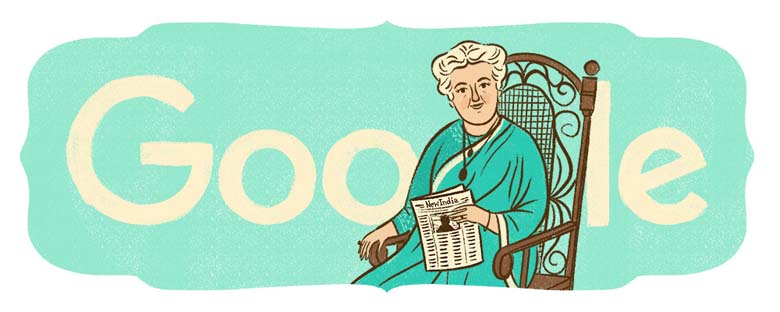
(Google)
On October 1, Google celebrates the life of a committed women’s rights activist hero, meet Annie Besant. The Google Doodle comes to us on what would have been her 168th birthday. She’s best known for her work in striving for India’s independence from Besant’s birthplace, the United Kingdom.
She was born in London in October 1847 to middle-class Irish immigrant parents. Besant would later rely on the Irish Home Rule movement and friendship with campaigner Michael Davitt for inspiration when bringing about social change in India.
Here’s what you need to know:
1. She Founded One of the Largest Schools in India
In July 1898, along with Dr. Arthur Richards, Besant founded the Central Hindu School. It’s located in the holy Hindu city of Varanasi. The school went by the motto “Knowledge is vitality.” She dreamed of creating of a school that gave a “sound secular education, combined with moral and religious instruction, based on the fundamental tenets of Hinduism.” The school is directly affiliated with Banaras Hindu University. At the time of the school’s founding, there were over 2,000 students. Today in India there are schools in the cities of Kolkata, Meerut, Delhi and Indore, that bear Besant’s name.
2. Besant Once Said ‘I Love the Indian People as I Love None Other’
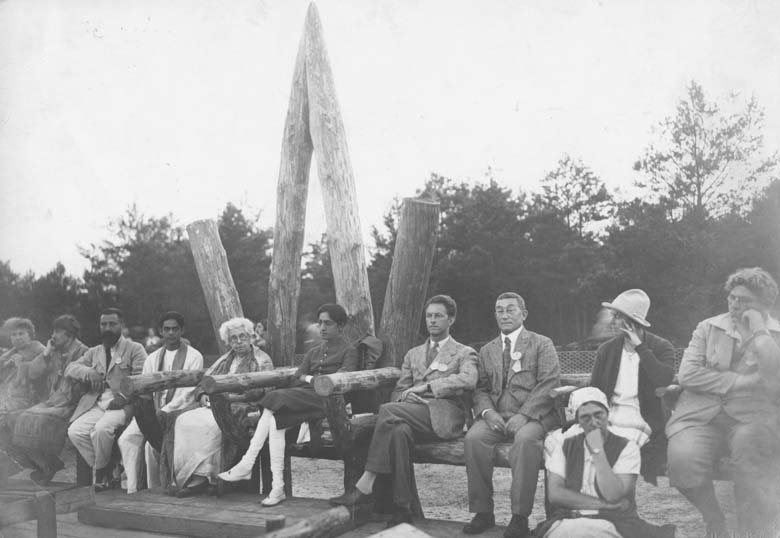
Mrs Annie Besant, theosophist, centre left, at an assembly of the Order of the Star of the East, with Krishnamurti, centre. (Getty)
According to a BBC profile, Besant first arrived in India in 1888. She settled there in the early 20th century and would die there in September 1933. In a paper she entitled “New India” she wrote:
I love the Indian people as I love none other, and… my heart and my mind… have long been laid on the alter of the Motherland.
While in India, she established the All India Home Rule League in Chennai in 1916, while the world was in the midst of World War 1.
3. She Became a Women’s Rights Activist After Losing Custody of Her Kids Following Divorce
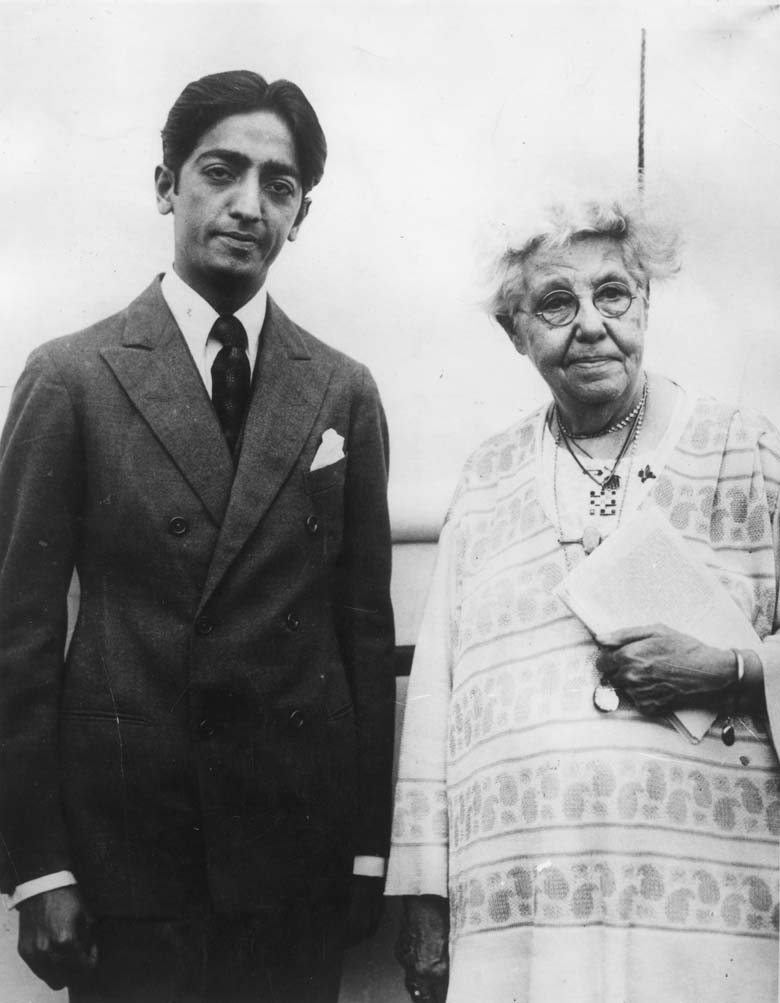
September 1933: English theosophist Dr Annie Besant (1847 – 1933) and Indian theosophist Jiddu Krishnamurti (1895 – 1986) whom she hailed as the Hindu Messiah. (Getty)
In 1867, Besant married a religious man named Frank Besant. The couple had two children together, Arthur and Mabel. However, by 1873, Besant had become a vocal critic of Christianity, which led to the couple’s divorce. The BBC profile, soon after the divorce Besant joined the National Secular Society. Also around this time, Besant began the National Reformer in London where she advocated for causes such as birth control and trade unions. It was her activism with the National Reformer that cost her custody of her children after her husband convinced the courts that she was an unfit mother, according to her profile at British Empire.
4. Gandhi Campaigned to Get Besant Released From Prison
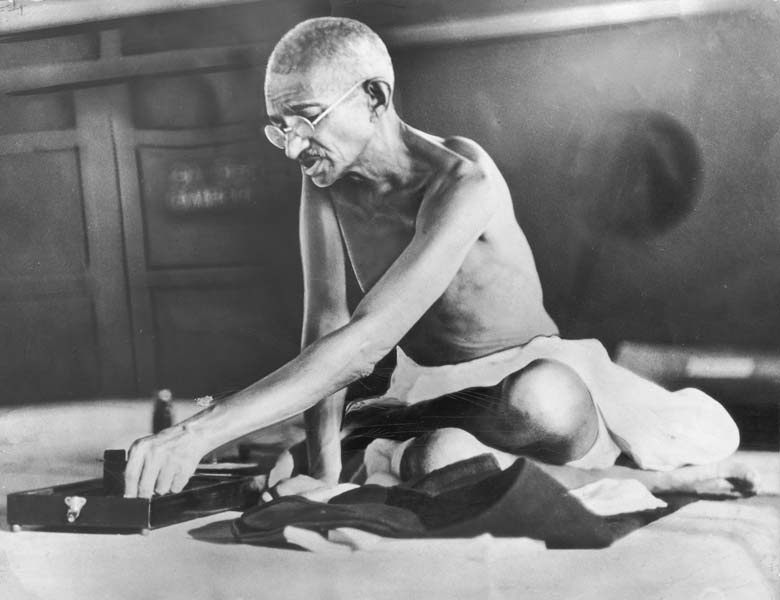
(Getty)
Shortly after founding the All India Home Rule League, Besant found herself imprisoned by the authorities. A campaign began to see her released, one of the most prominent of these campaigners was Mahatma Gandhi, who was a lawyer and had just returned to his homeland after helping with protests in South Africa. One of his closest advisors, Jawaharlal Nehru, had been educated in Besant’s teachings.
5. She Believed That Christians Merely See Women as a ‘Necessary Evil’
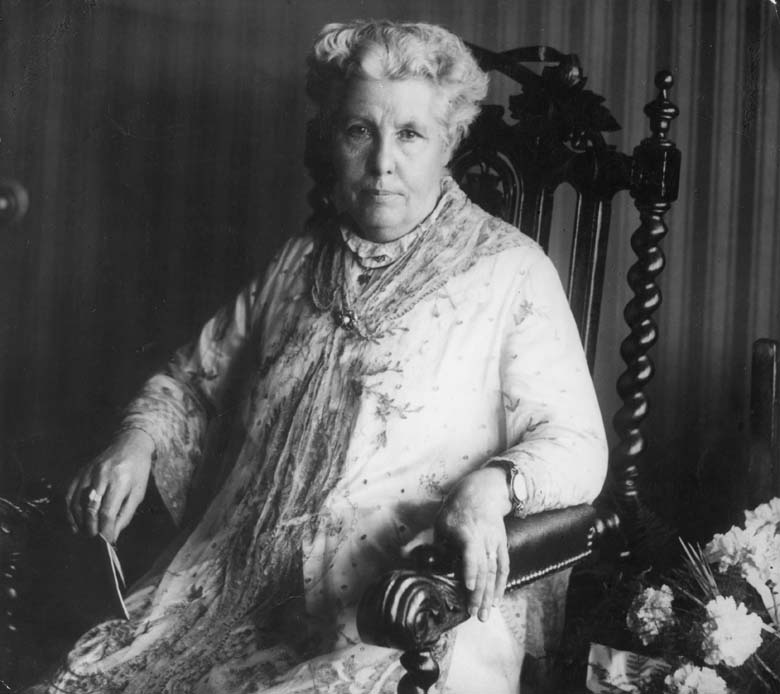
Besant pictured in June 1925. (Getty)
In a writing for the National Secular Society, Besant wrote that she believed that the Christian church saw women as merely a “necessary evil.” She wrote “Against the teachings of eternal torture, of the vicarious atonement, of the infallibility of the Bible, I leveled all the strength of my brain and tongue, and I exposed the history of the Christian Church with unsparing hand, its persecutions, its religious wars, its cruelties, its oppressions.”